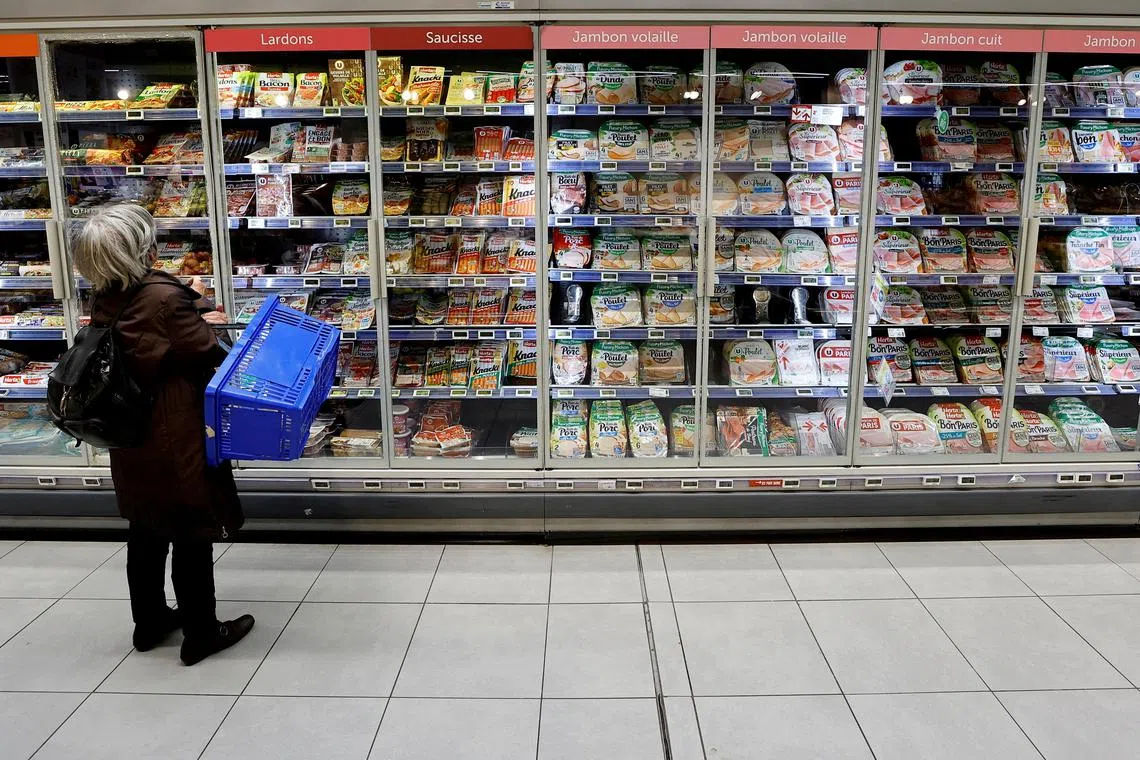World economy at critical juncture in inflation fight, central bank body warns
Sign up now: Get ST's newsletters delivered to your inbox

Despite the relentless rise in interest rates over the last 18 months, inflation in many top economies remains stubbornly high.
PHOTO: REUTERS
Follow topic:
LONDON – The world’s central bank umbrella body, the Bank for International Settlements (BIS), called on Sunday for more interest rate hikes, warning the global economy is at a crucial point as countries try to rein in inflation.
Despite the relentless rise in rates over the last 18 months, inflation in many top economies remains stubbornly high, while the jump in borrowing costs has triggered the most serious banking collapses since the financial crisis 15 years ago.
“The global economy is at a critical juncture. Stern challenges must be addressed,” BIS general manager Agustin Carstens said in the organisation’s annual report published on Sunday. “The time to obsessively pursue short-term growth is past. Monetary policy must now restore price stability. Fiscal policy must consolidate.”
Mr Claudio Borio, the head of BIS’ monetary and economics unit, said there is a risk an “inflationary psychology” is now setting in, although the bigger-than-expected rate hikes in Britain and Norway last week showed central banks are pushing “to get the job done” in terms of tackling the problem.
Their challenges are unique by post-World War II standards though. It is the first time that, across much of the world, a surge in inflation has co-existed with widespread financial vulnerabilities.
The longer inflation remains elevated, the stronger and more prolonged the required policy tightening, the BIS report said, warning that the possibility of further problems in the banking sector is now “material”.
If interest rates get to mid-1990s levels, the overall debt service burden for top economies will, all else being equal, be the highest in history, Mr Borio said.
“I think central banks will get inflation under control. That is their job – to restore price stability,” he told Reuters. “The question is what will the cost be.”
Banking crises
The Swiss-based BIS held its annual meeting in recent days, where top central bankers discussed the turbulent last few months.
March and April saw the failure of a number of regional banks in the United States, including Silicon Valley Bank, and then the emergency rescue of Credit Suisse in the BIS’ own backyard.
Historically, about 15 per cent of rate hike cycles trigger severe stress in the banking system, the BIS report showed, although the frequency rises considerably if interest rates are going up, inflation is surging or house prices have been rising sharply. It can even be as high as 40 per cent if the private debt-to-gross domestic product ratio is in the top quartile of the historical distribution at the time of the first rate hike.
“Very high debt levels, a remarkable global inflation surge and the strong pandemic-era increase in house prices check all these boxes,” said the BIS.
It estimated, too, that the cost of supporting ageing populations will grow by about 4 per cent and 5 per cent of gross domestic product (GDP) in advanced economies and emerging market economies respectively over the next 20 years.
Absent belt-tightening by governments would push debt above 200 per cent and 150 per cent of GDP by 2050 in advanced economies and emerging market economies respectively, and could be even higher if economic growth rates wane.
Part of the report already published last week also laid out a “game-changing” blueprint for an evolved financial system where central bank digital currencies and tokenised banking assets speed up and smarten up transactions and global trade.
Commenting further on the economic picture, Mr Carstens, former head of Mexico’s central bank, said the emphasis is now on policymakers to act. “Unrealistic expectations that have emerged since the great financial crisis and Covid-19 pandemic about the degree and persistence of monetary and fiscal support need to be corrected.”
The BIS thinks an economic “soft, or soft-ish” landing – where rates rise without triggering recessions or major banking crashes – is still possible, but accepts that it is a difficult situation.
Analysts at Bank of America have calculated there have been a whopping 470 interest rate rises globally over the past two years compared with 1,202 cuts since the financial crash.
The US Federal Reserve has lifted its rates 500 basis points from near zero,
The question remains what more will be needed, especially with signs that companies are taking the opportunity to boost profits and workers are now demanding higher wages to prevent a further erosion of their living standards.
“The easy gains have now been reaped and the last mile is going to be more difficult,” Mr Borio said, referring to challenges central bankers now face reeling inflation back to safe levels.
“I wouldn’t be surprised if there were more surprises.” REUTERS

